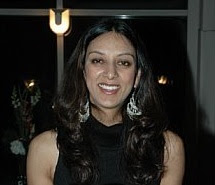
The first photo is of Kareena Kapoor, who never disappoints by wearing too much clothing. The second is one of Shah Rukh Khan's scenes in the movie Sheesha. The first is from imageshack.com, second from timesofindia.com (click for source).
Having just watched my first blockbuster Bollywood film in India in a long time, I am shocked by just how much Indian pop culture has changed...for the worse. The cheapness of it is disheartening. Now, I'm definitely an old fashioned girl in this modern world, in some ways--in my world view there's no drunken partying, sleeping around, cleavage displays/miniskirts, and potty mouths (though I can be a brat sometimes, but that's different). But by any measure, Bollywood has definitely gotten more...modern in the past few years. Before, the scant clothing was there, but stars wouldn't openly kiss onscreen, and sex scenes (except the most subtle hint of them) were nonexistent. Suggestions of premarital sex were depicted as rare and negative (prostitutes, corrupt men, etc). This has changed. Films like Salaam, Namaste and Jhoom Barabar Jhoom reflect the changing values of this lumbering, developing country. Along with the high tech cell phones, latest fashions, and glossy scenes, tv and film depict India's anti-traditional cultural development (to be distinguished from what concerns public health--and me--that is, human development). India is inching further away from being that nation rich with history, culture and diversity; it's getting closer and closer to a modern democracy driven primarily by market forces. It's not as far along on that pathway as some other countries (eg, China), and its great diversity and population size will slow it down considerably, but I've noticed a definite shift in popular values.
What's the result? I just spent a day with my distant cousin Kirtina. She's 12 years old, lives in an upper middle class apartment complex in a very nice part of Delhi, and is fascinated by both US and Indian pop culture (these days, what's the difference--if anything, the Indian version is even more "pop" than its US counterpart). She loves The Disney Channel, Nickelodeon, and Hindi serials and films like Jhoom. She is seduced by the song, dance and drama of the media--the same media that allows superstars to smoke onscreen, depict premarital relationships as the new norm, and wear clothing that leaves nothing to the imagination.
If public health efforts in India don't keep up with the "westernization" of Indian pop, STDs (and particularly HIV) could become an even bigger issue in the country than it already is. Effective prevention campaigns, school based awareness and family involvement are all needed to catch up with the poorly regulated media circulating in India today. The anomaly is that despite the fact that pop culture has become so lax and open, society still clings to traditional beliefs that sex should not be openly discussed (particularly with kids). Parents and teachers, astonishingly, don't want school based sex education, nor do they take it upon themselves to educate their children at home. There's the rub.
The solution? That's a tough one. Perhaps it would help to recruit age appropriate superstars to speak up for the cause. Since parents need to get on board, an older film/tv star would help to convince them. Kids would likely respond to younger stars, obviously--and not just Hindi stars, but American ones too. Lizzie Maguire, That's So Raven, and the newest Nickelodeon shows are all really big here. HIV/AIDS awareness and prevention messages can be incorporated into story lines, too, the way they are in the US. Of course, ignoring the issue is a convenient and attractive option. But not dealing with it is one way to predict that it'll haunt Indian public health for decades to come.

1 comment:
hi Farah
Nice article on your blog. I am a MPh student at UCLA. Nice to know your interests and fervour to serve.
Good luck
Giridhar babu
www.publichealth-india.blogspot.com
Post a Comment